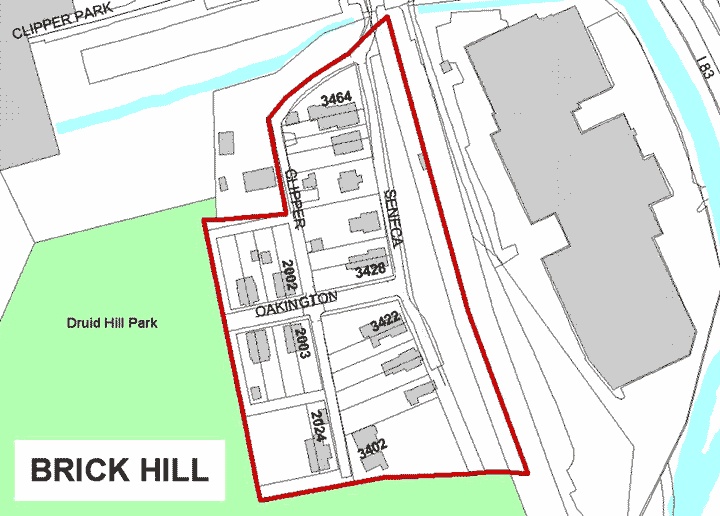Brick Hill
Description
Located atop a ridge above the Jones Falls Valley, Brick Hill was the center of Baltimore's prominent 19th century cotton textile industry. This four acre neighborhood of two and two and a half story masonry duplexes was constructed circa 1877 to house workers in Woodberry Manufacturing Company's Meadow Mill. All but one of the neighborhood's eleven duplexes were constructed of brick, hence the area's traditional name. The other duplex was constructed of stone. The duplexes are gable-roofed with four-bay-wide facades oriented to the three short narrow streets that form the neighborhood. A small one and a half story frame house, possibly a converted outbuilding, is also included in the district. Brick Hill's buildings retain the majority of their original fabric. Only one non-contributing structure exists within the district's boundaries.
Significance
Brick Hill's significance rests in its association with Baltimore's 19th century textile industry in the Jones Falls Valley. The district offers an isolated enclave of well-preserved workers' houses that served the Woodberry Manufacturing Company's Meadow Mill. Brick Hill exemplifies the paternalistic system that characterized relations between management and labor in Baltimore's textile industry.
During this period the Jones Falls Valley mills produced between 70 and 90 percent of the nation's total output of cotton duck and related products. From the mid-1840s to the peak of production in the last quarter of the 19th century, the Baltimore textile industry emphasized the "Rhode Island" system of organization. This system involved entire families in the labor force and provided numerous social amenities for workers. These amenities included housing at a nominal cost. Brick Hill dwellings were solidly built masonry duplexes situated on lots large enough to accommodate a kitchen garden. They typify the housing provided for workers during the textile industry's second phase of expansion in the 1870s.
